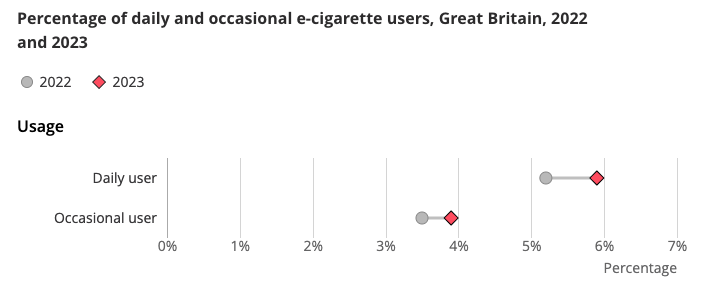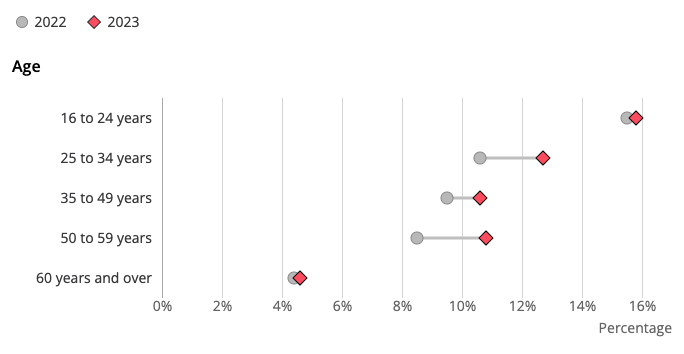Cigarette smoking habits among adults in the UK, including how many people smoke, differences between population groups, changes over time and use of e-cigarettes.
Release date : 1 October 2024
Next release : To be announced
Version : Latest
View previous releases
Contact : Health.data@ons.gov.uk







